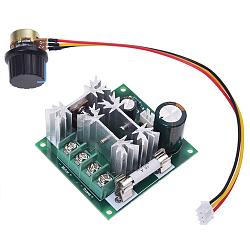Yup the choke is in series. When current first passes through it some of that energy goes into building a magnetic field in the choke core until it can build no more. When the voltage to the choke is reduced, the magnetic field in the core collapses, in turn generating current in the windings. So, in a circuit it has an overall effect of smoothing out varying incoming voltage (if the choke is chosen specifically for the electrical operating conditions).
A transformer from a microwave oven usually has enough meat in the core to make useful inductors (chokes). I'm adding DC to my Horror Freight transformer welder and I'm using as many turns of welding cable as I can get into the core to smooth the voltage ripple. Since they're wound for reasonably high current at 120V input they can also be used to make a custom transformer by winding a new secondary. Determine how many turns are in the primary then divide by 120 to arrive at the turns per volt for that transformer, then use that figure to determine how many turns are needed for your desired output voltage, then wind a secondary with that number of turns of magnet wire selected to handle your desired output current. If it fits you're crusin' on easy street.


 LinkBack URL
LinkBack URL About LinkBacks
About LinkBacks


 Reply With Quote
Reply With Quote





Bookmarks